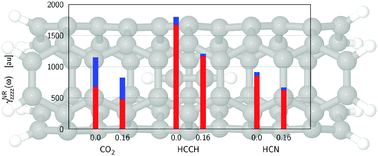On the particular importance of vibrational contributions to the static electrical properties of model linear molecules under spatial confinement
Abstract
The influence of the spatial confinement on the electronic and vibrational contributions to longitudinal electric-dipole properties of model linear molecules including HCN, HCCH and CO2 is discussed. The effect of confinement is represented by two-dimensional harmonic oscillator potential of cylindrical symmetry, which mimics the key features of various types of trapping environments like, for instance, nanotubes or quantum well wires. Our results indicate that in general both (electronic and vibrational) contributions to (hyper)polarizabilities diminish upon spatial confinement. However, since the electronic term is particularly affected, the relative importance of vibrational contributions is larger for confined species. This effect increases also with the degree of anharmonicity of vibrational motion.



 Please wait while we load your content...
Please wait while we load your content...